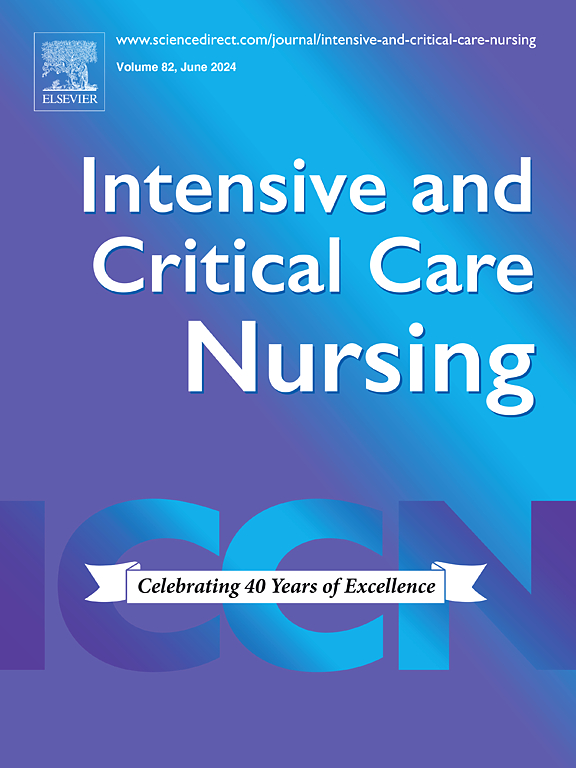Comparative analysis of fully automated vs. conventional ventilation in postoperative cardiac surgery patients: Impact on alarms, interventions, and nurse acceptance
IF 4.9
2区 医学
Q1 NURSING
引用次数: 0
Abstract
Objectives
To compare the number of alarms, interventions and nurses’ acceptance of automated ventilation with INTELLiVENT-ASV versus conventional ventilation strategy in patients receiving postoperative ventilation after cardiac surgery.
Methods
This preplanned secondary analysis of the ‘POSITiVE’ randomized clinical trial compared INTELLiVENT-ASV (automated ventilation) with conventional ventilation in postoperative cardiac surgery patients. The number of critical alarms and manual ventilator interventions were compared during the first three hours of ventilation or until extubation. Nurses’ acceptance was assessed using a Technology Acceptance Model 2-based questionnaire and a user acceptance score from 1 to 10.
Results
POSITiVE randomized 220 patients (109 to automated and 111 to conventional ventilation). The average number of critical alarms per monitoring hour was similar between the automated and conventional group (5.6 vs 5.7; p = 0.823). The automated group required fewer manual interventions per monitoring hour for both ventilation control (0.7 vs 1.9; p < 0.001) and alarm management (2.0 vs 2.8; p < 0.001). The automated ventilation mode scored higher for perceived usefulness (2.6 vs 2.1; p < 0.001) and user acceptance (8.0 vs 7.0; p < 0.001), but similar for perceived ease of use.
Conclusions
Automated ventilation for postoperative cardiac surgery patients had similar alarm frequencies as conventional ventilation, but reduced the number of interventions and showed higher nurses’ acceptance, indicating its potential to optimize patient care and reduce nurses’ workload.
Implications for Clinical Practice
Our findings suggest that automated ventilation modes like INTELLiVENT-ASV can reduce the frequency of manual interventions and improve nurses’ acceptance, which may help alleviate nurses’ workload for postoperative cardiac surgery patients.
求助全文
约1分钟内获得全文
求助全文
来源期刊

Intensive and Critical Care Nursing
NURSING-
CiteScore
6.30
自引率
15.10%
发文量
144
审稿时长
57 days
期刊介绍:
The aims of Intensive and Critical Care Nursing are to promote excellence of care of critically ill patients by specialist nurses and their professional colleagues; to provide an international and interdisciplinary forum for the publication, dissemination and exchange of research findings, experience and ideas; to develop and enhance the knowledge, skills, attitudes and creative thinking essential to good critical care nursing practice. The journal publishes reviews, updates and feature articles in addition to original papers and significant preliminary communications. Articles may deal with any part of practice including relevant clinical, research, educational, psychological and technological aspects.
 求助内容:
求助内容: 应助结果提醒方式:
应助结果提醒方式:


